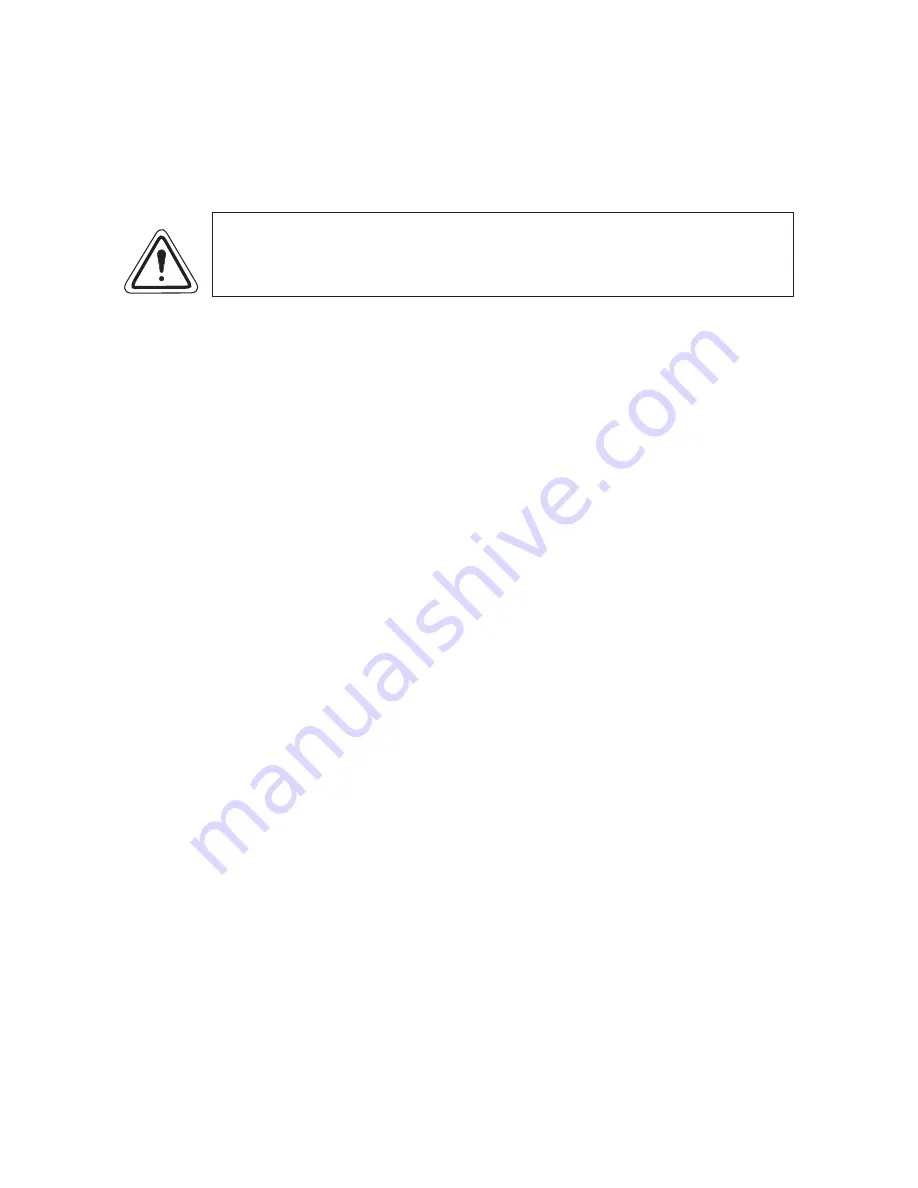
5
1.15 Electrical
Power
1.151 Power Source Review
Review the power source and the motor rating to be sure they agree in voltage, phase and frequency. On three-
phase applications the direction of rotation of the motor must be considered. Make a momentary check rotation
at the time of power installation and wiring. Momentary backward rotation of the pump is not harmful. Check the
layout drawings for proper direction of rotation.
CAUTION
Make certain the power settings on the pump match your power
source before attempting to operate the pump
1.152 Overload
Protection
Motor thermal overload protection is made available by the motor manufacturer as an aid to minimizing motor
failure. Overload protection is a standard feature on all single-phase 60Hz motors. Single-phase motors will
normally have automatic overload protection. Motors of 1-1/2 horsepower or larger supplied with DUOSEAL
pumps contain no overload protection. Installations of such equipment must comply with local electrical codes
which dictate appropriate starter and protection devices. It is strongly suggested that you familiarize yourself
with the protection supplied with your motor so that you may react accordingly in the event of an emergency.
Automatic reset protection is designed to reset itself after a predetermined cooling period. If the fault to the drive
remains unaltered, the motor will cycle on and off until the fault is corrected. The motor data plate will indicate the
presence of thermal protection.
1.16
Vacuum Connections (See Accessory Section in back of this manual.)
1.161 Choice of Connections
The choice of connections and fi tting can have a very marked effect on the pumping speed at the vacuum
chamber. Any connection placed between the pump and the chamber creates an impedance to the fl ow of gas.
This is particularly true at low pressures in the millitorr range where the gas fl ow is substantially molecular in
character. The gas fl ow is then dependent upon the kinetic activity of the molecules to bring it to the intake of the
pump.
1.162 The Effects of Conductance
It has been shown that the conductance of a tube is proportional to the cube of its radius and inversely
proportional to its length. Therefore it is imperative that the connecting lines be as large in diameter and as short
in length as practical. For best results the diameter of the connecting tube should be at least as large as the
diameter of the pump intake. To avoid a large reduction in pumping speed at the vacuum chamber, it is clear that
the conductance of the line must be considerably greater than the speed of the pump.
1.163 Metal
Joints
If metal piping or tubing is used, it is preferable to solder or braze all of the connections. Where threaded joints
must be used, coat the threads with LocTite® Thread Sealant with PTFE, or Leak Lock and screw together tightly.
Flanged connections with elastomer gaskets make excellent demountable joints. Modular vacuum piping and
fi ttings are now extensively used.
1.164 Rubber
Tubing
Joints
Where metal tubing is used between the system and the pump intake, joints can be make by butting the ends of
the two sections together in a short section of vacuum hose. Worm-screw band clamps are useful for securing
the hose to the tubing. Whatever the joint you choose to use, cleanliness should be of utmost importance.
1.165 Valves and Stopcocks
Metal valves or stopcocks may be used in the connecting line between the system and the pump to provide a
means of isolating the pump from the system. To minimize the impedance of fl ow, the valve openings should be
as large as possible. Lubricate the rotating plug of the stopcock with a fi lm of vacuum grease suffi ciently thick
enough to prevent seizure.






































